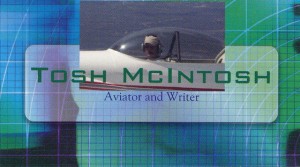 In the previous Writer’s Desk logbook entry, I wrote of a website dedicated to late-blooming novelists and the advantages of self-publishing, specifically through the ebook format. I also mentioned the blog of a literary-agent-turned-author who has maintained his penchant for blogging since departing Curtis-Brown to pursue other interests, such as publishing a middle-grade novel.
In the previous Writer’s Desk logbook entry, I wrote of a website dedicated to late-blooming novelists and the advantages of self-publishing, specifically through the ebook format. I also mentioned the blog of a literary-agent-turned-author who has maintained his penchant for blogging since departing Curtis-Brown to pursue other interests, such as publishing a middle-grade novel.
Since that post, I have received from writer friends more links to blogs in which the topic of self-publishing versus traditional (or legacy) publishing is explored in detail. The purpose of this post is to offer a bit of personal reflection and relate how the current state of the industry is beginning to affect me at this point in my efforts to become a published author.
Prior to the personal computer, word-processing program, and laser printer, writing a novel and preparing it for submission to a publisher was such a labor-intensive effort that many wannabe novelists drank beer instead. Literary agents primarily served the role of assisting authors with publishing contracts, often after they had been offered to the author.
That changed when the quantity of manuscripts arriving at the publishers became unmanageable. Agents assumed the role of “gatekeepers” whose primary function is to filter all the submissions down to the “two-percenters” worthy of an acquisition editor’s time. (The term comes from the fact that only 2% of submitted material makes it into print.)
This traditional publishing process has dominated the industry for years. Authors who either couldn’t get an agent or didn’t want to try could send manuscripts to the very few publishing houses that accept un-agented submissions, some of which might end up in print.
Failing that, authors could self-publish, also known derogatorily as “vanity” publishing. And for the most part that’s all it was. Yes, you had published a book, but your family and close friends were the only ones who ever got a copy, plus the few that you might be able to sell out of the trunk of your car by visiting book stores and asking the manager to let you set up a book-signing. The print-on-demand option eliminated the requirement to stock inventory, but no matter the method, sales of self-published books averaged fewer than 150 copies.
 As I write this, however, reliable indicators suggest that traditional publishing is under assault by a rising tide of self-publishing success. While I am continuing to submit queries to agents, I cannot shed the nagging thought that the time has come not to stop submitting, necessarily, but to become very knowledgeable about the alternative, which may well be “where it’s already at.”
As I write this, however, reliable indicators suggest that traditional publishing is under assault by a rising tide of self-publishing success. While I am continuing to submit queries to agents, I cannot shed the nagging thought that the time has come not to stop submitting, necessarily, but to become very knowledgeable about the alternative, which may well be “where it’s already at.”
Even a cursory read of the blog posts in these links leads me to conclude the following:
- The decision to self-publish in print and/or ebook format is far from a panacea for all that ails unpublished novelists. Commercial success has to start with writing a story that lots of folks will want to read.
- It can begin with self-published print and ebook sales and stay there, or shift to traditional print once the author has a proven track record that legacy publishing understands. My friend and fellow writer David Mignery reports that accompanied by a flash of lightning and rolling thunder, he envisioned a future in which traditional publishing will exclusively recruit writers who have already achieved success in self-publishing. With all due respect to David, I’m doubtful, because traditional publishing will need the successful self-published author far more than vice-versa.
- Commercial success can also begin traditionally and shift to self-published print and ebooks when the author has had enough of being at the mercy of others and decides to take control. Of everything.
- Which means that you either line edit the manuscript and design the interior layout and cover yourself, or hire someone else to do it. Creating a professional book is far more than a matter of converting a Word file with one click. A fellow writer reports investing about $3,000 on pre-publication services from others.
- Once you have a book to sell, the impact of widespread online networking to market yourself and your book cannot be overstated.
- Neither the traditional nor self-publish industry is interested in “one-trick” authors. Multiple books create momentum.
- Although marketing strategies such as offering books for free may seem counter-intuitive, they are demonstrably effective in generating simultaneous and/or subsequent sales.
- No market forces currently exist to slow, much less reverse, the accelerating erosion of traditional print publishing by self-published print and ebooks.
If you are interested in taking a closer look at thoughtful, in-depth analysis of the present and informed predictions for the future of publishing, check out the links below:
Self-publishing vs traditional: which way will make you more money?
How to use kickstarter to fund a self-published book.
The economics of self-publishing an ebook.
Marketing potential of a free Kindle book.



